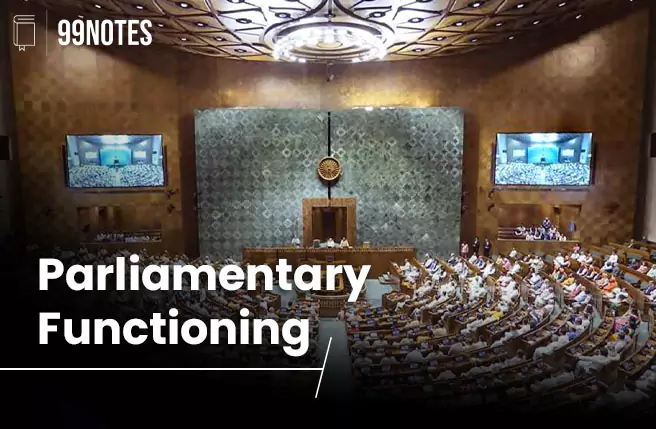Federal System
Federalism is a governance mechanism in which the state’s sovereignty is distributed between different units, i.e. centre, state and local bodies. It is a vertical distribution of power, i.e. division of power between different layers of government.
It seeks to define the relationship between the central government and regional governments. It institutionalises political cooperation and collective co-existence.
A federation is a political arrangement made through a contract or agreement between various units. These units are known by different names: states in the USA and India, Cantons in Switzerland, Republics in Russia and Provinces in Canada.
Usually, there are two layers of government in the federal system;
- One is responsible for issues of common interests such as defence, communication, etc.,
- And the other layer at the provincial level is responsible for the day-to-day administering of their states.
A federal system serves a dual purpose:
- Safeguarding and promoting the unity and integrity of the country,
- Facilitates the accommodation of regional diversities.
This system also has utility in providing efficient administration.
How is the Federal system different from the Unitary system?
- The relationship between the Union and lower units can be of two types: Unitary and Federal.
- In a Unitary type system, all authorities are vested in the Union government, and states either do not exist or derive their power from the Centre itself.
- In a federal system, the Constitution divides power between the Centre and the lower units.
- Countries like Britain, Japan, France, Italy, Spain, etc., have unitary types of government, while the USA, Canada, Russia, Australia, have a federal model of government.
|
Comparisons of Federal and Unity Features |
|
| Federal | Unitary |
| Dual government (National and regional government) | Single government (It may create regional governments) |
| Supremacy of Constitution | May be Supreme (Like India), may not be (Britain) |
| Written Constitution | It may be written (France) or unwritten (Britain) |
| Division of power between Centre and state | No division of powers |
| Rigid Constitution | It may be rigid (like in France) or flexible (like in Britain) |
| Bicameral Legislature | Maybe bicameral (Britain) or Unicameral (China) |
| Independent Judiciary | It may be independent or not independent |
General Characteristics of the Federal system
- Multiple Tiers of Government: In the federal system, the same citizens are governed by multiple tiers of government, i.e. at the national, province, and local levels (municipalities).
- Multiple Jurisdictions: Each tier has its own jurisdiction in particular areas of legislation, taxation, and administration.
- Written Constitution: A written Constitution serves as a contract between the Union and the states. The jurisdiction of respective tiers of government is clearly specified in the Constitution.
- No Unilateral Change in the Federal Scheme: The federal provisions of the Constitution cannot be amended unilaterally. It requires the consent of the constituent states.
- Independent Judiciary as Arbiter: The judiciary has the authority to interpret the Constitution and can decide on the powers of different tiers of the government. It decides the disputes between the Centre and states as well as between different states.
- Financial Autonomy: Sources of revenue for each tier of government are clearly specified.
Types of Federal Systems
The federations can come into existence in two ways: one is known as the ‘Coming Together Federation’, and the other as the ‘Holding Together Federation’.
1. Coming together Federations:
In nations like the United States, it was the states that pooled their sovereignty while retaining their identity in order to increase their security. This route involves independent states coming together to form a bigger state or country.
In this type of federation, constituent states have equal powers vis-à-vis the Centre. Such a federation is an ‘Indestructible union of indestructible states.
Switzerland and Australia are other examples where different states came together to make a nation.
Related FAQs of Federal System
Federalism in India refers to the distribution of power between the Centre and the States, ensuring a division of responsibilities for governance while maintaining the unity and integrity of the nation.
The Indian federal system is called ‘Quasi-Federal’ by KC Wheare because, while it has federal features like division of powers and independent judiciary, it also has strong unitary features like central dominance in emergencies.
‘Coming Together’ Federation involves independent states forming a union (e.g., USA), while ‘Holding Together’ Federation involves a single country decentralising powers to accommodate diversity (e.g., India, Belgium).
The Constitution divides powers through three lists under Schedule 7: Union List (Centre), State List (States), and Concurrent List (Both). Residuary powers are vested with the Union Government.
Key features include: Written Constitution, Division of Powers, Independent Judiciary, Bicameral Legislature, Financial Autonomy, and Rigid Amendment Procedures for federal provisions.







